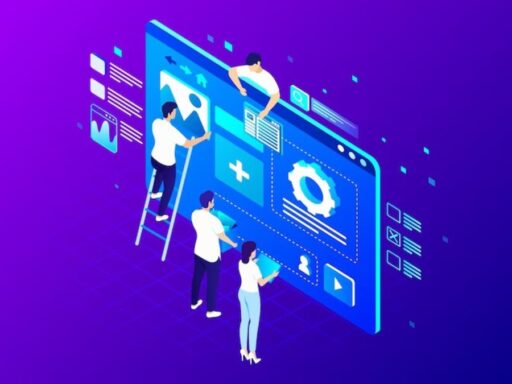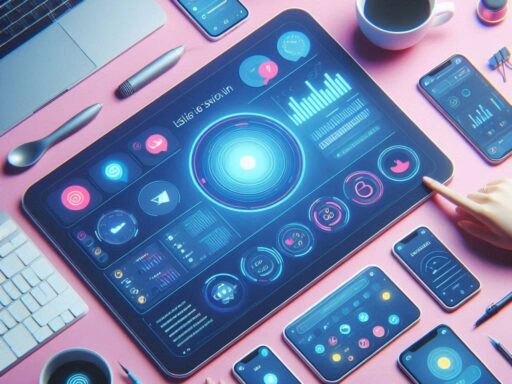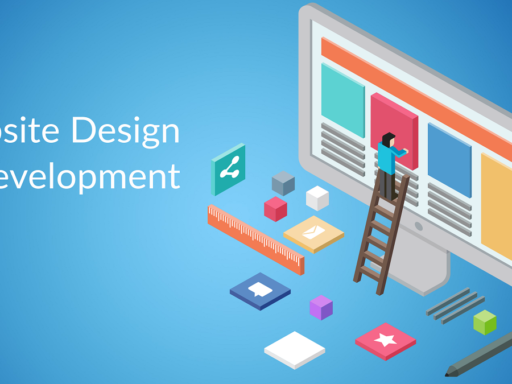Designers
Designers play a crucial role in shaping the user experience and visual identity of web projects. They focus on creating interfaces that are not only aesthetically pleasing but also intuitive and user-friendly. Here are some detailed aspects of their roles:
- UI/UX Design:
- User Interface (UI) Design: Involves designing the visual elements of a product such as buttons, icons, typography, color schemes, and layout. Tools like Sketch, Figma, and Adobe XD are commonly used for creating high-fidelity designs and interactive prototypes.
- User Experience (UX) Design: Focuses on the overall feel of the product and ensuring that users have a seamless and engaging experience. UX designers conduct user research, create personas, wireframes, and user flows to guide the design process.
- Prototyping:
- Wireframes: Basic blueprints of the web pages that outline the structure and layout without detailed design elements.
- Interactive Prototypes: Tools like InVision, Marvel, and Axure RP help in creating clickable prototypes that simulate the final product’s user experience, allowing for usability testing and feedback collection.
- Graphic Design:
- Visual Assets: Creating logos, icons, images, and other graphical elements that are consistent with the brand’s identity. Adobe Illustrator and Photoshop are standard tools for graphic design.
- User Research:
- Usability Testing: Conducting tests with real users to identify pain points and areas for improvement. Methods include A/B testing, heatmaps, and user interviews.
- Surveys and Interviews: Gathering qualitative and quantitative data to understand user needs, preferences, and behaviors.
- Branding:
- Consistency: Ensuring that the design aligns with the overall branding strategy, maintaining consistency across different platforms and touchpoints.
- Style Guides: Creating style guides that document the design standards and guidelines for the project, ensuring uniformity in design elements and interactions.
Developers
Developers are responsible for transforming the designs into functional and interactive web applications. Their work ensures that the product is not only visually appealing but also performant, secure, and scalable. Here are the detailed roles and responsibilities of developers:
- Front-End Development:
- HTML, CSS, and JavaScript: The foundational technologies for building web interfaces. Developers use frameworks like React, Angular, and Vue.js to build dynamic and responsive user interfaces.
- Responsive Design: Ensuring that the web application works seamlessly across different devices and screen sizes. Tools like Bootstrap and media queries in CSS are commonly used for responsive design.
- Back-End Development:
- Server-Side Logic: Handling the business logic, database interactions, and server configuration. Common languages include Node.js, Python, Ruby, PHP, and Java.
- Databases: Managing data storage using databases like MySQL, PostgreSQL, MongoDB, and Firebase.
- Full-Stack Development:
- Holistic Approach: Full-stack developers are proficient in both front-end and back-end technologies, allowing them to build entire web applications from scratch. They understand how the entire stack works together and can bridge the gap between front-end and back-end development.
- Quality Assurance:
- Testing: Writing unit tests, integration tests, and end-to-end tests to ensure the application is bug-free and works as expected. Tools like Jest, Mocha, Selenium, and Cypress are commonly used for testing.
- Code Reviews: Conducting code reviews to maintain code quality and ensure best practices are followed.
- DevOps:
- CI/CD: Implementing continuous integration and continuous deployment pipelines to automate the build, test, and deployment process. Tools like Jenkins, Travis CI, CircleCI, and GitHub Actions are popular in DevOps practices.
- Cloud Services: Managing cloud infrastructure using platforms like AWS, Azure, and Google Cloud, ensuring the application is scalable, secure, and reliable.
Effective Collaboration Between Designers and Developers
Effective collaboration between designers and developers is essential for the success of web projects. Here are some strategies and best practices to foster collaboration:
- Agile Methodology:
- Sprints: Working in short, iterative cycles allows teams to deliver features incrementally and get feedback quickly. Agile tools like JIRA, Trello, and Asana help manage tasks and track progress.
- Stand-Up Meetings: Daily stand-ups keep everyone informed about the progress and any blockers, fostering communication and collaboration.
- Design Systems and Style Guides:
- Consistency: Design systems provide a single source of truth for design and code, ensuring consistency across the application. They include reusable components, design tokens, and documentation.
- Tools: Tools like Storybook allow designers and developers to collaborate on UI components in isolation, ensuring consistency and quality.
- Version Control:
- Git: Using version control systems like Git helps manage changes to the codebase and design files, allowing multiple team members to work simultaneously without conflicts.
- Collaboration: Platforms like GitHub, GitLab, and Bitbucket provide collaboration features like pull requests, code reviews, and issue tracking.
- Feedback and Iteration:
- User Testing: Regularly testing the product with real users provides valuable feedback that can be used to improve both design and functionality.
- Iteration: Embracing an iterative approach allows teams to continuously improve the product based on feedback and changing requirements.
- Clear Communication:
- Documentation: Maintaining comprehensive documentation for both design and development helps ensure that everyone understands the project’s goals, guidelines, and standards.
- Communication Tools: Tools like Slack, Microsoft Teams, and Zoom facilitate real-time communication and collaboration, making it easier for teams to stay connected and aligned.
Challenges and Tips for Overcoming Them
Collaboration between designers and developers can sometimes be challenging due to differing perspectives and workflows. Here are some common challenges and tips for overcoming them:
- Misalignment on Goals:
- Solution: Regularly align on project goals, requirements, and priorities through kick-off meetings, workshops, and continuous communication.
- Design Handoff Issues:
- Solution: Use tools like Zeplin, InVision Inspect, or Figma’s design handoff features to provide developers with precise design specifications, assets, and CSS code snippets.
- Technical Constraints:
- Solution: Designers should involve developers early in the design process to understand technical constraints and feasibility, ensuring that designs are practical and achievable.
- Lack of Understanding of Each Other’s Roles:
- Solution: Conduct cross-functional training sessions or workshops where designers and developers can learn about each other’s roles, tools, and challenges.
- Version Control Conflicts:
- Solution: Establish clear version control practices and workflows, such as feature branching and regular merges, to minimize conflicts and ensure smooth collaboration.
Conclusion
The synergy between designers and developers is critical to the success of modern web projects. By understanding each other’s roles, leveraging the right tools, and fostering effective communication and collaboration, teams can create products that are visually stunning, highly functional, and provide an exceptional user experience. Embracing best practices and overcoming challenges together leads to a more cohesive and efficient workflow, ultimately resulting in successful and impactful web projects.






